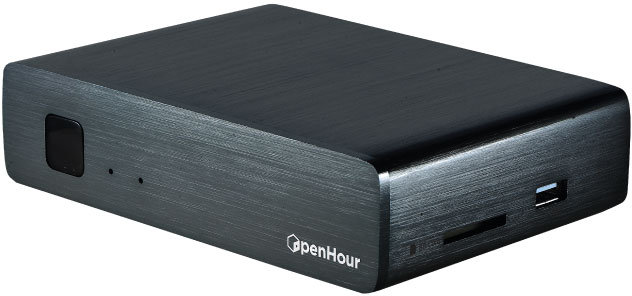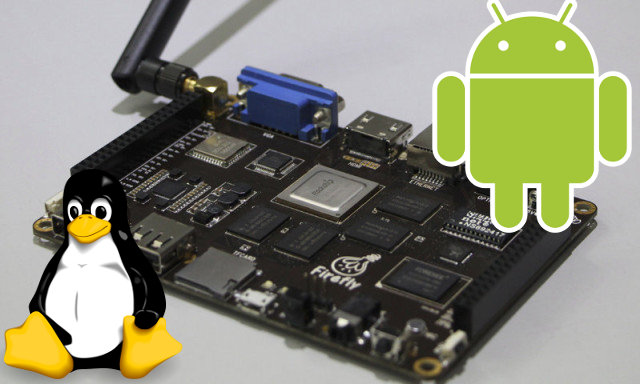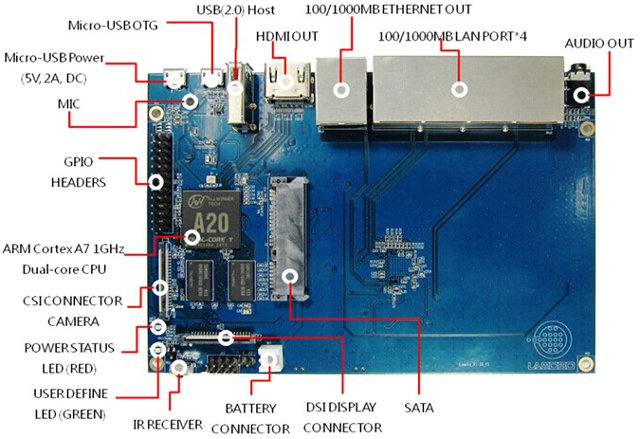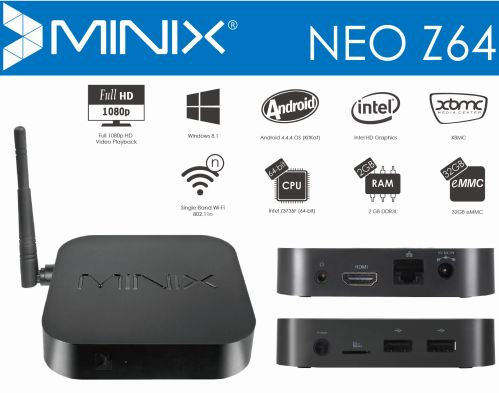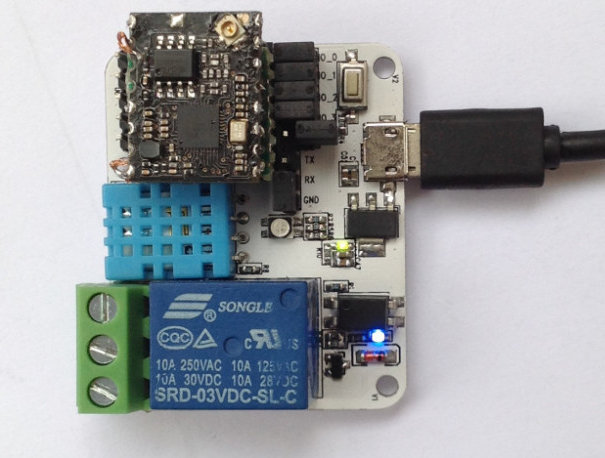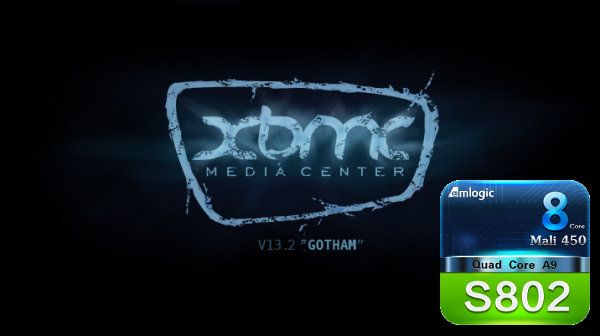Cloud Media, previously known as Syabas, has been selling Popcorn Hour media players based on Linux for several years, but with OpenHour Chameleon the company is about to launch their first Android media player powered by Rockchip RK3288. The device is similar to other RK3288 TV boxes, except it does not come with internal storage at all, and instead boots Android 4.4.2 from a provided 8GB SD card, with later plans to have support for Linux operating systems such as Ubuntu. Another particularity is that they’ll use an aluminum casing for better heat dissipation of the Rockchip RK3288 processor which can get pretty hot… OpenHour Chameleon specifications: SoC – Rockchip RK3288 quad core ARM Cortex A12 / A17 processor with ARM Mali-T764 quad-core 3D GPU supporting OpenGL ES 1.1/2.0/3.0, and OpenCL 1.1 System Memory – 2GB DDR3 Storage – No Internal storage + SD card slot with 8GB card (including […]
Rockchip RK3288 Android 4.4.2 SDK and Schematics Released for Firefly Board
Firefly-RK3288 development board was first announced in July. I still don’t have news about availability nor pricing, but the T-Firefly website launched yesterday. They seem do have a nice Wiki, but unfortunately everything is currently in Chinese, except when you go to the download page. You’ll find firmware upgrade_tool for Linux and Windows, the USB drivers for rooting and firmware update, firmware images (Android 4.4.2, Ubuntu 14.04, and dual boot), the board schematics (PDF), and Android KitKat 4.4.2 SDK with U-Boot, Linux, and Android source code, some documentation, XBMC apk (no source) with H.265 hardware decode support for MP4, MOV and MKV container formats. The SDK is available on Bitbucket. I planned to test it, but unfortunately my network connection is very slow (and unstable) to this server, and I failed to retrieve it with git clone. The company also posted the build instructions in Chinese in their website, but […]
Linaro 14.08 Release with Kernel 3.16 and Android 4.4.4
I’m a little late for that one, as Linaro 14.08 was released last Thursday. Nevertheless, this release features Linux kernel 3.16 (baseline), Linux 3.10.52 (LSK), and Android 4.4.4. As usual Linaro has worked on member hardware such as Qualcomm based IFC6410 and ARM Juno &Vexpress boards. They’ve also committed changes for LLVM, big Endian, and added a workload generator tool (rt-app) to the Ubuntu and Android image. This tool has been developed and used by the power management working group, presumably to measure and optimize power consumption under various loads. Here are the highlights of this release: Linux Linaro 3.16-2014.08 GATOR version 5.19 (new version) updated topic from Qualcomm LT (ifc6410 board support) updated Versatile Express ARM64 support (FVP Base and Foundation models, Juno) from ARM LT (Landing Team) updated Versatile Express patches from ARM LT updated LLVM topic (follows the community llvmlinux-latest branch) Big endian support (the 2014.05 topic […]
New Optimized Web Browser Released for the Raspberry Pi
If you’ve ever tried to use a Raspberry Pi to browse the web, you must have noticed how frustrating it can be due to the overall sluggishness of the system. But thanks to work by Collaborra, which optimized Epiphany Web browser for the Raspberry Pi, bringing features such as 720p HTML5 hardware video decoding (no flash support), faster loading and scrolling, etc.., the web browsing experience has much improved, although as you’ll see from the video below, it’s still not quite 100% perfect. The key modifications brought to Epiphany Web browser are listed below: More responsive UI and scrolling, even while loading a page Progressive tiled rendering for smoother scrolling Startup is three times faster Avoid useless image format conversions Better YouTube support, including on-demand load of embedded YouTube videos to make page load much faster Hardware decoding and scaling of videos (through gst-omx) Reduction of the number of memory […]
Banana Pi BPI-R1 Board Based on AllWinner A20 Features 5 Ethernet Ports, a SATA Interface, and More
SinoVoIP, a company known for its Banana Pi board and related spamming, has been working on another AllWinner A20 product called BPI-R1 (Banana Pi R1), a router/NAS platform that features 5 Gigabit Ethernet ports, a SATA interface, HDMI, audio output, and more. BPI-R1 Board specifications: SoC- Allwinner A20 dual core Cortex A7 processor @ 1 GHz with Mali-400MP2 GPU System Memory – 1 GB DDR3 Storage – SD card slot up to 64GB, SATA connector for hard drive or SSD up to 2TB Video output – HDMI, LVDS/RGB via DSI connectors Audio I/O – HDMI, 3.5mm stereo jack, and on-board microphone Camera – CSI connector possibly interfacing with their upcoming BPI-D1 camera Connectivity – 5x Gigabit Ethernet (RJ45) ports including 4x LAN ports, 1x WAN port, 802.11 b/g/n Wi-Fi (RTL8192CU module) with two antenna connectors. USB – 1x USB 2.0 port, 1x micro USB OTG port, 1x micro USB for […]
MINIX NEO Z64 is an Intel Atom Z3735F Bay Trail mini PC Selling for $129
If you thought the upcoming ZBOX ZOTAC PI320 mini PC powered by Intel Bay-Trail-T Atom Z3735F quad core processor was nice and small (and powerful), but at $199, a little pricey, MINIX NEO Z64 may be what you are looking for. On On the outside, NEO Z64 looks very much like the company’s NEO X8 Android TV Box, but inside it’s powered by the same Z3735F processor with 2GB RAM, and 32GB eMMC, and it’s is expected to sell for just $129. MINIX NEO Z64 specifications: SoC – Intel Atom Z3735F “Bay Trail” quad core processor @ 1.33 GHz (Burst freq up to 1.83 GHz) and Intel HD Graphics System Memory – 2GB DDR3L Storage – 32GB eMMC flash + micro SD slot Connectivity – 10/100M Ethernet, Wi-Fi 802.11n + Bluetooth 4.0 Video Output – HDMI Audio Output – Analog Stereo output, HDMI USB – 2x USB 2.0 Misc – […]
xWifi Open Source Hardware Wi-Fi Module and Dock for the Internet of Things (Crowdfunding)
For some reasons, Wi-Fi modules are pretty popular this year. After modules such as VoCore, AsiaRF AWM002, and ESP8266, here’s come xWifi. This module is based on Mediatek MT7681 SoC which includes a TCP/IP stack like Espressif ESP8622 or TI CC3300, so it won’t run OpenWRT like VoCore or AsiaRF modules. The module only consumes about 350mW during transfer, it will be open source hardware, and the xWifi module plus a dock with a 10A relay, a humidity and temperature sensor, and a LED will go for as low as $17. xWifi module only specifications: SoC – Mediatek MT7681 802.11 b/g/n SoC with 32-bit RISC CPU. Support for Client/softAP mode. Package size 5×5 mm Storage – 512KB SPI Flash (for firmware) I/Os via headers: UART and SPI interfaces. 5x GPIOs PWM Power – 3.3V, GND Power Consumption – ~70mA @ 5V (during RX active) Dimensions – 14 x 17 mm The […]
XBMC 13.2 Android and Source Code for Amlogic S802 Released
Based on comments on my M8 review post, many people have troubles with XBMC stability on this hardware, and the official XBMC 13.2 release can only be used on Android 4.2.2. But there’s hope, and maybe a solution to all these problems, as stane1983 has now released XBMC 13.2 for Amlogic S802 with backports from Kodi 14 alpha, that runs on Android 4.4.2. So if you have issues with XBMC in your Amlogic S802 Android TV box, you may want to download and install XBMC Gotham 13.2 (20140831_xbmcapp-stane.apk) from Stane1983’s download section. If you have an Amlogic device running Android 4.2.2, this won’t work due to differences with Amlogic’s libplayer header files, and you need to download and install mainline XBMC 13.2 instead. He’s also made all source available on his github account. Jean-Luc Aufranc (CNXSoft)Jean-Luc started CNX Software in 2010 as a part-time endeavor, before quitting his job as […]


